In my experience, our identities tend to fracture along urban, suburban and rural divisions. While I’m a passionate Montrealer, the idea of belonging to a place that includes the Dix30 conjures waves of revulsion. Yet since most suburban areas are home to few and places of passage for many, the diversity the suburbs remains invisible to most of us. (You can read Joel’s 2011 take on suburban diversity here).
Arriving in the historic village of La Prairie was magical: old wooden homes edged narrow streets that were evidently laid before automobiles became king of the ‘burbs. Turns out that this town dates back to the 17th century, when it was an important lieu of contact between European colonists and Iroquois – the legacy is centered around the Evangelization of at least 200 natives including Kateri Tekakwitha. At least two 17th century houses are still standing in the village, along with a church built in 1840, bordered by newly renovated cobblestone streets (source pdf).
Perhaps just as startling as stumbling upon a 350-year-old village in the suburbs was the fact that the picturesque town was deserted on a sunny Saturday afternoon. One restaurant was hosting a wedding party on its terrace, but overall the streets were bare, the shops empty. As Jean pointed out, it felt kind of like wandering around in Google Street View. While this may have added to the magical feeling, it also made me concerned about the survival of this small town, especially when it is in competition with such thrilling nearby destinations as Boulevard Taschereau. So if you’re looking for a romantic change of scene and want to get away from the throngs of Old-Montreal tourists, Vieux La Prairie is only about a 10-km bike ride from Montreal.
We emerged abruptly from Vieux La Prairie into condo-land. My first instinct was to lapse back into my usual suburb-suspicious self, especially when faced with water-jets coming out of an artificial lake (ugh, so fake!) and individual paddle-boat docks (ick, so kitch!).
But somehow, Lac la Citière won me over against the odds. The artificial lake is hardly an ecological reserve, but it’s probably more ecologically sound than the usual fill-in-and-pave-over approach to wetland areas. It was at least possible to believe that the reed-bordered pond provided some habitat for wildlife and it undeniably serves as a rainwater retention basin, not to mention a world of discovery for kids. With its relatively dense town-houses a short walk from the village centre, and it’s relatively natural surroundings, this suburban development was actually quite palatable – especially when you realized it’s all only 10km by bike from downtown Montreal.
Of course not all the suburbs won me over. The part of Brossard that we traversed felt interminable, with its cookie-cutter homes and apartments, surrounded with acres of oozing parkland. As we crossed through the S-sector (with streets called Stravinsky, Schubert, Savard, Sabourin) and the T-sector (Tolstoy, Toscanini, Thérèse, Thomas) I couldn’t help but imagining they were named during a great game of Scattergories at town hall. I hate the way this toponymy denies the community any link to its history or its physical environment; the way it implies that the streets sprung up alphabetically on a blank canvas.
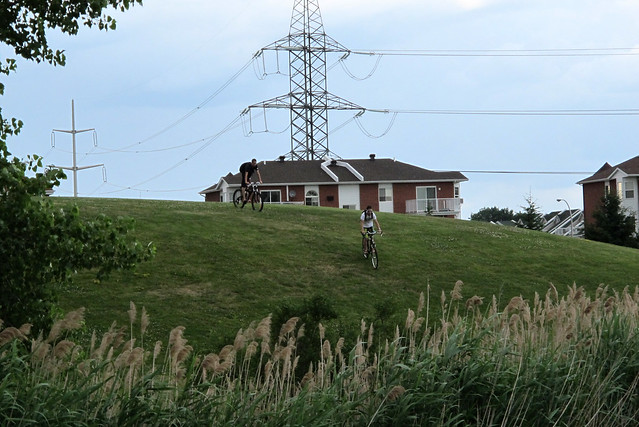
Oh, and another reason to appreciate the suburbs: the town of Saint-Lambert kindly allowed our group of more than a dozen people to pitch our tents and spend the night in a public park. We got to watch the fireworks shower over Montreal’s skyline before collapsing into our sleeping bags to the incessant hum of the highway.

I was just as pleasantly surprised by our trek through Laval on Monday. The first thing that caught my eye was the woonerf sign I spotted in Saint-Vincent-de-Paul. Pretty surprising when just last year the Sud-Ouest borough was flaunting their plans to build the Montreal’s first woonerf…
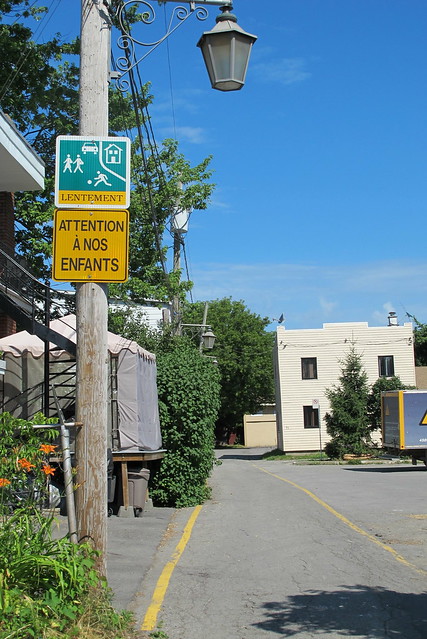
After wandering through a rather dismal district full of prisons and detention centres, we quickly found ourselves in farmland. Mount Royal’s two humps were still clearly visible beyond the strawberry fields, reminding us just how close these productive fields were to the city’s hungry plates. Lets hope that – with the PMAD’s restrictions on dezoning agricultural land – it can stay this way.
Finally, as I headed back into the city after the walk was completed, I was surprised to find this Islamic cemetery by the highway-side in Laval, a nice reminder that cultural diversity has long-since taken root in the suburbs. I believe that this cemetery also serves Montreal’s muslim community (more info would be welcome in the comments).
While the Montreal Metropolitan Region is certainly not lacking for stereotypically cringe-worthy suburban scenes, there are a few jewels to be found in our couronnes.

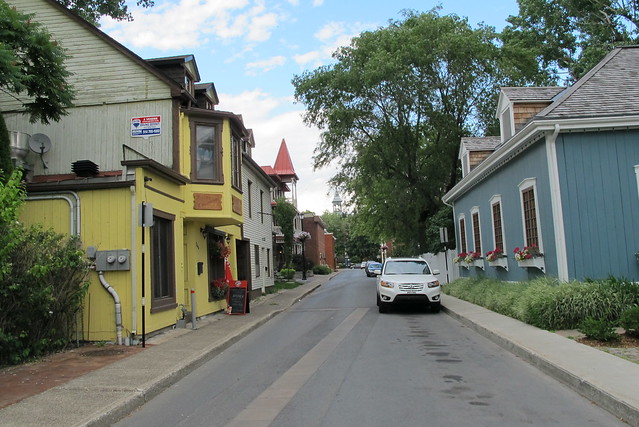
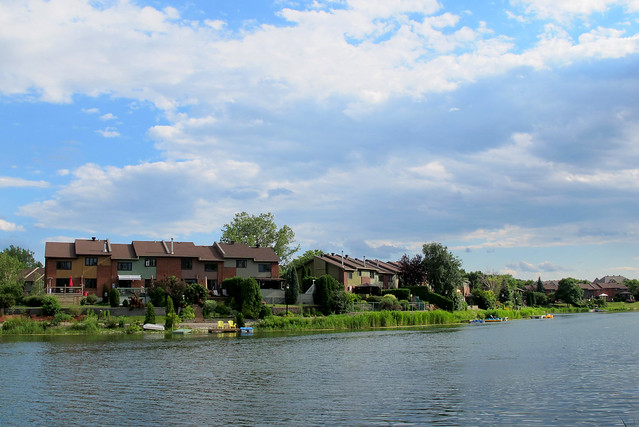

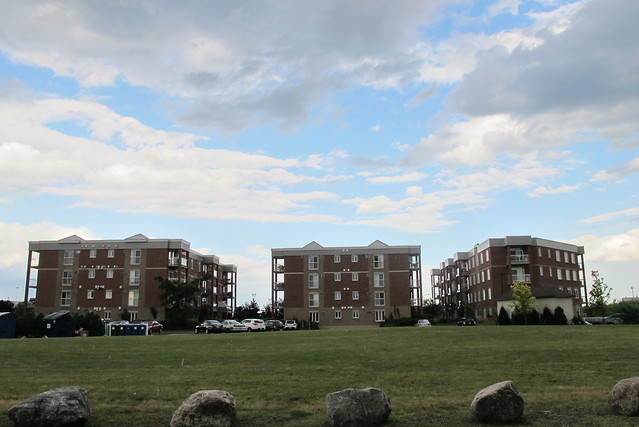

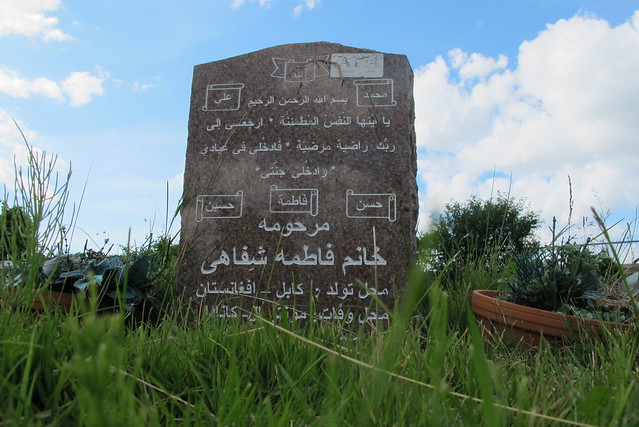
One comment
I bike through the areas described in this every once in a while and my impression was very similar to yours, right down to me making snarky remarks about my partners positive comments about the artificial lake.
Thanks a lot for this series of posts — I’m enjoying them a lot!